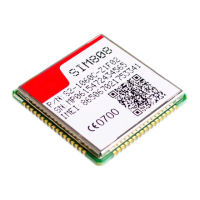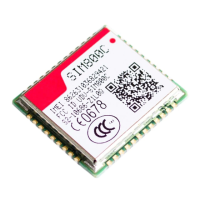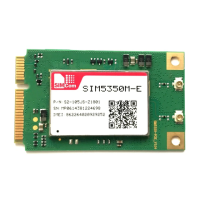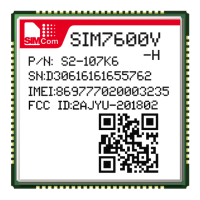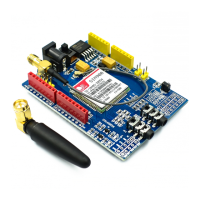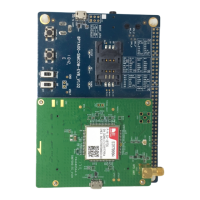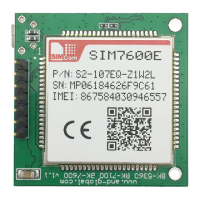Smart Machine Smart Decision
SIM800_Hardware Design_V1.10 44 2018-08-13
4.12. I2C BUS
The SIM800 provides an I2C interface. It has the following features:
Compliant master mode operation
Adjustable clock speed for LS/FS mode operation
Support 7-bit/10-bit addressing
Support high speed mode
Support slave clock extension
START/STOP/REPEATED condition
Manual transfer mode
Multi-write per transfer (up to 8 data bytes for non-DMA mode)
Multi-read per transfer (up to 8 data bytes for non-DMA mode)
Multi-transfer per transaction
Combined format transfer with length change capability
Active drive/write-and I/O configuration
Table 21: Pin definition of the I2C
Note: I2C has been pulled up to 2.8V via 4.7KΩ inside.
4.13. General Purpose Input/Output (GPIO)
SIM800 provides 2 GPIO pins. The output voltage level of the GPIO can be set by the AT command “AT+
SGPIO”
or “AT+CGPIO”. The input voltage level of the GPIO can also be read by the AT command “AT+
SGPIO”or
“AT+CGPIO”. For more details, please refer to document [1].
NOTE: If you use AT+SGPIO,, <GPIO> According to the following mapping
GPIO17
<GPIO>=3
GPIO19
<GPIO>=2
The Pin number table in the AT+CGPIO command under <pin> reference
Table 22: Pin definition of the GPIO
Pin name Pin number
GPIO17
SCL 37 I2C serial bus clock(open drain output)
SDA 38 I2C serial bus data(open drain output)
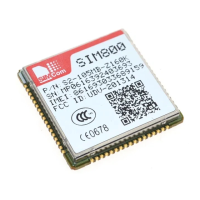
